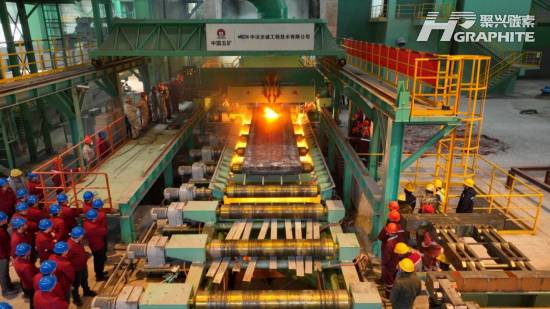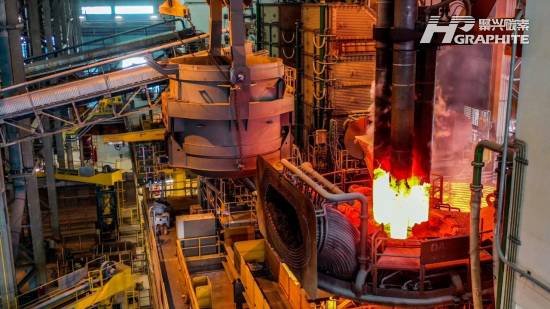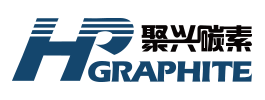【EAF Steel】Professor Zhu Rong of USTB Talks About China's EAF Steel Technology

With the growth of electric arc furnace steelmaking and the new energy industry, the needle coke market has broad prospects, especially driven by the demand for high-power graphite electrodes.
【EAF Steel】Professor Zhu Rong of USTB Talks About the Current Status and Future of China's EAF Steel Technology
"The establishment of the Electric Arc Furnace Steel Sub-Association by the China Iron and Steel Association (CISA) is a great event for our EAF steel industry. I extend my warm congratulations in advance!" said Professor Zhu Rong, who has been engaged in electric arc furnace (EAF) steel research for over 40 years. He is a professor at the Carbon Neutrality Research Institute of the University of Science and Technology Beijing (USTB) and the director of the National Key Laboratory for Green and Low-Carbon Steel Metallurgy. During an interview with China Metallurgical News on February 19, he expressed his great enthusiasm upon hearing the news of the forthcoming establishment of the EAF Steel Sub-Association. He believes that the sub-association will play a crucial role in guiding and promoting the healthy, orderly, and high-quality development of China's EAF steel industry.
During the interview, Zhu highly praised CISA's efforts in advancing EAF steel research and development. For instance, He Wenbo, Party Secretary and Executive President of CISA, and Jiang Wei, Deputy Secretary and Secretary-General, personally led teams to the USTB laboratory to conduct research, exchange views, and provide guidance on EAF steel development. Furthermore, the "near-zero carbon emission electric arc furnace steelmaking process" proposed by Zhu's team has been recognized by CISA as one of the eight globally leading key low-carbon common technologies.
When discussing the current status and trends of China's EAF steel technology with China Metallurgical News, Zhu provided detailed insights— —
Current Status and Challenges of China's EAF Steel Development
Discussing the current state of EAF steel development in China, Zhu pointed out that EAF steelmaking has long been economically less advantageous than converter steelmaking, and the limited scrap steel resources have further constrained its growth. Currently, China has approximately 200 million tons of EAF steel capacity, but actual output is even lower. According to statistics, in 2021, EAF steel accounted for 10.7% of total crude steel production in China, reaching a peak over the past decade. However, by 2023, this share had declined to 9.7%. Presently, EAF steel accounts for about 10% of China's steel production, significantly lower than the approximately 70% in the United States, 50% in Europe, and 30% in Japan. This also falls short of the 15% target set in the 14th Five-Year Plan.
In terms of equipment and technology, Zhu noted that significant breakthroughs have been achieved in China in the areas of low-carbon smelting, efficient production, and intelligent control. In low-carbon steelmaking, Zhu's team introduced an integrated "wind-solar-storage" power supply model, combined with hydrogen energy and biomass gas as oxygen lance fuel, exploring a zero-carbon smelting path. Pilot projects have already been implemented at Hebei Iron & Steel Group's Zhangxuan Technology and CITIC Pacific Special Steel's Jingjiang facility. Regarding efficient steelmaking, the smelting cycle has been shortened to 30-35 minutes, power consumption per ton of steel reduced to 300-350 kWh, and electrode consumption lowered to below 1 kg per ton of steel. In intelligent steelmaking, artificial intelligence (AI) algorithms and big data technology are widely applied, with furnace condition monitoring robots and automated sampling systems being gradually introduced.
However, Zhu also acknowledged that domestic EAF technology still lags behind its international counterparts, as foreign EAF technology has had a longer development period and is relatively more advanced. Currently, China still relies heavily on imported EAF equipment. That said, domestic design institutes under the China Metallurgical Group (MCC) have also developed innovative new EAF designs that show promise and require strong national support. Despite some gaps between China's EAF steel production technology and world-class EAFs, certain individual technologies have reached or even surpassed global standards. For example, China's bottom-blowing EAF technology has been the first to achieve engineering implementation worldwide, and the power supply and oxygen lance technology have successfully replaced imported counterparts, with process indicators reaching internationally leading levels.

Regarding the slow development of EAF steel in China, Zhu identified several key factors:
1. Scrap Steel Resource Constraints: As a developing country, China's total accumulation of scrap steel remains limited. Additionally, the scrap steel recycling system is not well-developed, with annual scrap recovery at approximately 250 million tons. Moreover, converter steelmaking in China also consumes significant amounts of scrap steel—about 200 kg per ton of steel or even higher—competing with EAF steel for resources. This naturally restricts the development of EAF steel, which relies entirely on scrap steel.
2. Production Cost Issues: Due to relatively high electricity prices, Chinese EAF steel producers typically operate during off-peak hours to reduce costs, meaning production primarily takes place at night. Even with this cost-saving approach, EAF steel production costs remain higher than those of converter steel, leading to a capacity utilization rate fluctuating around 50%.
3. Scrap Steel Quality Issues: Before the 1990s, EAF steel production in China was mainly focused on special steel. However, with the boom in the real estate sector, EAF production shifted towards ordinary steel products such as wire rods and rebar, which have relatively lower scrap quality requirements. Since the 14th Five-Year Plan period, due to a sluggish real estate market and increasing carbon reduction pressures, EAF steel production has partially shifted back to structural steel and special steel, bringing scrap quality issues to the forefront. Scrap steel contains complex compositions and high levels of impurities, making it challenging to produce high-quality steel using 100% scrap. For instance, high-quality automotive sheet steel requires copper content below 0.08%. In the past, Japan exported significant amounts of scrap steel to China, with copper content reaching 0.3% or even as high as 0.6%. Removing copper from scrap steel remains a global challenge, and achieving high-value utilization of scrap steel is a key issue that China must address.

Innovation in Near-Zero Carbon Emission Electric Arc Furnace Steelmaking
The steel industry accounts for about 16% of China's total carbon emissions, making it a critical sector in achieving the "dual carbon" goals. While traditional EAF steelmaking emits only one-third of the carbon emissions of converter steelmaking (with fully scrap-based crude steel production emitting around 600 kg of CO₂ per ton), further reductions are needed to align with carbon neutrality objectives. To this end, Zhu's research team has spent nearly a decade developing a near-zero carbon emission EAF steelmaking process.
Zhu detailed how this process achieves near-zero carbon emissions in three key aspects:
1. Near-Zero Carbon Energy Sources: By utilizing renewable energy sources such as solar and wind power, electricity can be supplied to the steelmaking process with minimal carbon emissions. The integration of wind-solar hybrid power generation and storage systems enhances cost efficiency and ensures stable EAF production. Estimates suggest that the combination of wind-solar hybrid power and off-peak electricity could reduce average power costs to RMB 0.2-0.3 per kWh, significantly lowering energy costs while achieving near-zero carbon energy supply.
2. Near-Zero Carbon Smelting Processes: This involves metallurgical processes that do not involve carbon emissions, such as hydrogen-fueled burners, biomass gas burners, carbon-free foaming slag agents, and clean scrap steel refining technologies. Key technological breakthroughs include:
1) Hydrogen-oxygen jet combustion, achieving high melting efficiency without CO₂ emissions.
2) Biomass powder and CO₂ gas as alternatives to carbon powder for slag formation, reducing carbon emissions.
3) Oxygen-calcium oxide injection for rapid dephosphorization, improving efficiency and lowering energy consumption.
3. Near-Zero Carbon Raw Materials: Utilizing hydrogen-based direct reduction, electrified auxiliary material production, and plasma-heated lime kilns to minimize carbon emissions from raw materials. For example, integrating hydrogen-based direct reduction with photovoltaic hydrogen production can achieve near-zero emissions in direct reduced iron production.
Zhu's team has verified this near-zero carbon EAF process in a newly designed 5-ton pilot EAF. Their calculations show that ultimate carbon emissions from steelmaking could be reduced to 64 kg per ton of steel. If 80% of China's projected 2060 steel production (800 million tons) adopts this process, total carbon emissions could be cut to less than 10% of current levels, providing a critical pathway for the global steel industry to achieve carbon neutrality.
Feel free to contact us anytime for more information about the artificial graphite anode market. Our team is dedicated to providing you with in-depth insights and customized assistance based on your needs. Whether you have questions about product specifications, market trends, or pricing, we are here to help.
No related results found








0 Replies